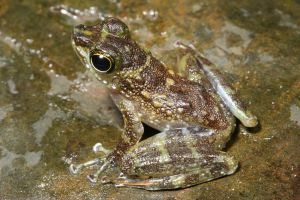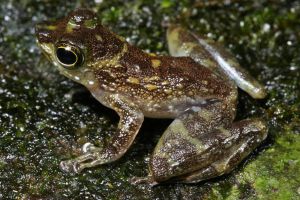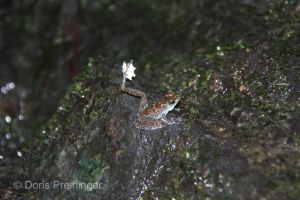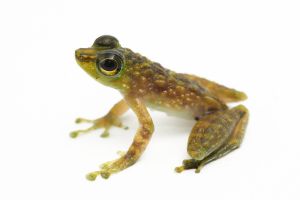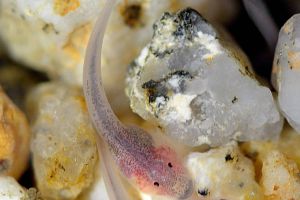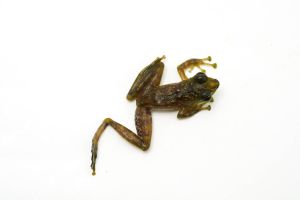
Frogs of Borneo

Frogs of Borneo

Frogs of Borneo

Frogs of Borneo

Frogs of Borneo

Frogs of Borneo

Frogs of Borneo

Frogs of Borneo

Frogs of Borneo

Frogs of Borneo

Frogs of Borneo
Bornean Families
Staurois:
parvus
Lesser Rock Skipper
Staurois parvus is a small representative of the genus. Previously this taxon was included in S. tuberilinguis, but Matsui (2007) has argued that it is a species of its own, albeit closely related to S. tuberilinguis, based on morphological and molecular evidence (recently confirmed by Arifin et al. 2011). The elevational range of parvus is not yet fully understood but the species appears to be most abundant below 1000 m (versus S. tuberlilinguis being most abundant at higher elevations).
The hallmarks of S. parvus and characters that distinguish it from its relative S. tuberilinguis are the shorter snout (compared to eye-diameter) and the smaller body size. Males S. parvus only reach ca. 20–24 mm snout–vent length, females 26–31 mm. The pupil is horizontal, not perfectyl oval but slightly drop-shaped. The iris is bronze or golden in the lower sector. In the upper sector it is mostly black with a golden line along the pupil.
The general coloration above is in the range of brown to green or olive with lighter, greenish markings; on the legs with lighter cross-lines. Chest and belly are bluish white. The skin is pebbled with scattered tubercles that can be arranged in interrupted longitudinal lines. The toe tips are expanded to adhesive disks.
S. parvus has been reported from Brunei and adjacent Sarawak, as well as Sabah. Records from western Sarawak also exist, however, their relatedness to the populations from Brunei and northeastern Borneo still needs to be established. As the other species in the genus, it uses foot-flagging for intraspecific communication.
Details of the reproductive behavior were obtained by captive breeding at the Zoological Garden Vienna. The tadpole images we present here are from these captive breedings and depict early stage tadpoles. The tadpoles are similar to those of S. guttatus. See description there.
Version tracking
-
20.08.2025
updated
